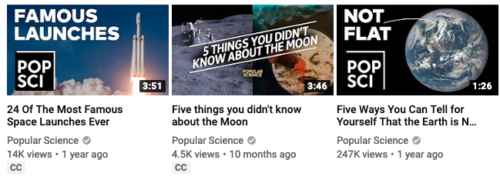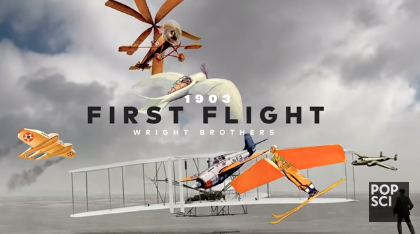7 Tips From Popular Science for Awe-Inspiring Video, Articles and Audio
By: Sophie Maerowitz
April 8, 2019
Whether you’re creating video, written or audio content, a number of best practices should always be front of mind. Thrifty marketers must ensure they are making the most of source material, repurposing it strategically for different media. Videos, articles and podcasts must be truly ready for prime time before deployment. Audiences’ preferences and consumption behaviors should inform content choices.

Jason Lederman, Associate Producer, Popular Science
Jason Lederman, associate producer at Popular Science (PopSci for short), applies all of these practices as he works across different media at the magazine, which covers a broad range of science and technology subjects. At PopSci, Lederman produces written content, YouTube videos and podcasts about science and tech. He offers the following tips for satisfying audiences’ appetites for different kinds of content:
Leverage existing talent and content in the planning phase. “Scripts for our YouTube videos can be based on articles we’ve written, themes from the news or original concepts dreamed up by someone on staff,” says Lederman. “PopSci is very collaborative, and our writers often help with the video-making process, answering questions, reporting for scripts, or doing work in front of the camera.”
Be strategic around length and frequency. Lederman’s team has determined they have the staff and resources for two to four videos per month. In terms of length, “PopSci’s videos are at least 90 seconds long, but can run eight minutes, or even longer, depending on the subject,” according to Lederman.

Credit: PopScience YouTube
Give the people what they really want. “Listen to your audience! Study metrics to see what your audience enjoys, and find patterns to determine why they like that content,” Lederman advises. He warns against creating videos that you think your audience might like. Instead of guessing, Lederman says marketers must make video content that your audience is asking you for via “views, comments, and other forms of social engagement.”
Video quality must trump quotas and deadlines. Be it for an article, a podcast or a video, PopSci’s storytelling is always informative, playful and accessible. That’s because Lederman’s team dedicates as much time as it needs to creating video that is beautiful, interesting and full of essential information.
Amplify internally, but partner with likeminded brands for wider reach. “Make sure your staff shares each other’s work—you’re a team,” argues Lederman, who encourages marketers to find other, similar brands whose audience partially overlaps with their own. “See if they’ll engage in a ‘social swap.’ It’s a great way for new people to find you, and all it takes is an email or DM.”
Leverage free and archival video footage. “One thing that sets Popular Science apart is how long it’s been around—147 years. We often incorporate vintage footage into our videos,” says Lederman, who notes that much of this footage is available for free through the Prelinger Archives at archive.org. Instead of feeling limited by resources around video, Lederman sees shoestring budgets as an opportunity: “The less budget you have for assets, the more creative you have to be to find media you can use. That’s a big strength we have at PopSci.”
Fulfill your brand promise. Lederman feels that marketers must deliver what they promise in a tantalizing headline. This may mean a rewrite of a video script or recording a pickup line (or even segment) for your podcast, but Lederman points out that those enjoying your content will be grateful for the effort. “Across platforms, PopSci wants to shed light on important issues and inspire awe. The universe is an interesting, weird, beautiful, and awesome place. We like showing people that.”
Follow Jason: @Lederman


